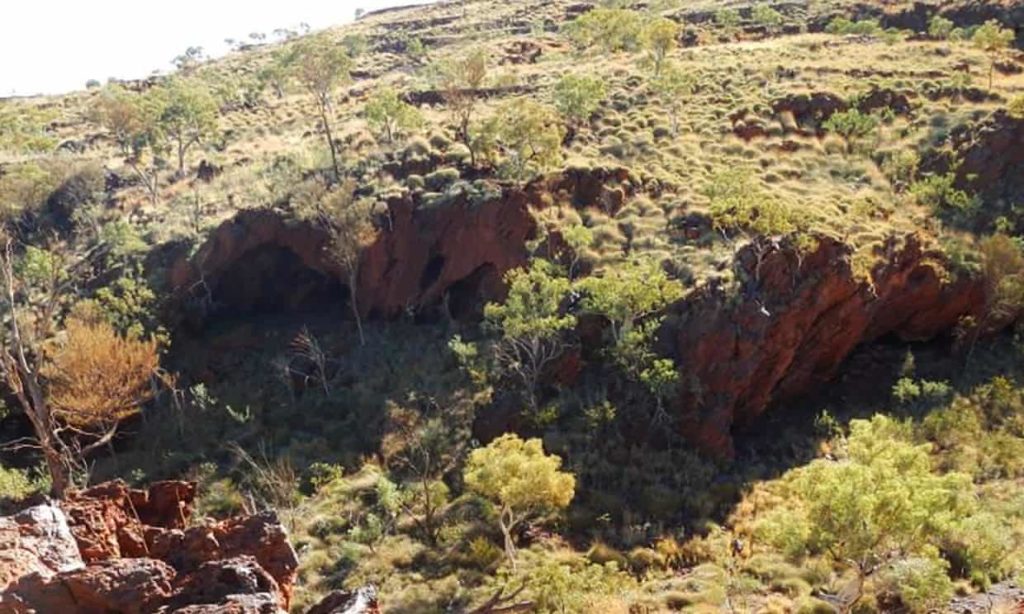A 46,000-Year-Old Aboriginal Site Was Just Deliberately Destroyed in Australia

A 46,000-Year-Old Aboriginal Site Was Just Deliberately Destroyed in Australia
During the iron ore mine expansion this last weekend, a culturally important archaeological site has been destroyed in Western Australia.
With state approval, the mining company responsible for the incident revealed the weak and bigoted conservation laws of Australia.

On Sunday mining explosions destroyed the Juukan 1 and the Juukan 2 rock shelter in the area of Pilbara in Western Australia.
This is devastating news, as indigenous Australians occupied rock shelters more than 46,000 years ago, making them one of the country’s oldest heritage sites in the country.
It’s a huge cultural loss for the site’s traditional owners, the Puutu Kunti Kurrama and Pinikura People (PKKP), as well as archaeologists who had not fully investigated it.
Mining company Rio Tinto destroyed the sites to expand its Brockman 4 iron ore mine, which lies immediately adjacent to sites in the Juukan Gorge.
A hugely frustrating aspect of this story is that Rio Tinto was allowed to do it under state law, as the mining company procured ministerial consent in 2013 under Section 18 of Australia’s Aboriginal Heritage Act.
In 2014, Rio Tinto funded an expedition to recover items of archaeological importance at the rock shelters, but according to WAtoday, “the dig turned up finds whose significance exceeded all expectations.” These finds included ancient pounding and grinding stones, a tool made from kangaroo bone dating back some 28,000 years, and a 4,000-year-old belt made from human hair.

The belt also yielded DNA, which was subsequently linked to PKKP traditional owners. A report detailing these findings is expected later this year, and it will stress the importance of these two rock shelters, and other sites deserving of further exploration, reports WA Today.
“This is one of the earliest, if not the earliest, sites in the upland Pilbara and is part of a rich landscape of places in the area that have not been studied in-depth,” PKKP Land Committee Chair John Ashburton said in a statement. “There are less than a handful of known Aboriginal sites in Australia that are as old as this one and we know from archaeological studies that it is one of the earliest occupied locations not only on the western Hamersley Plateau but also in the Pilbara and nationally. Its importance cannot be underestimated.”
Despite these recent findings, and armed with its state-sanctioned permission, Rio Tinto went ahead with its scheduled explosions, much to the dismay of the PKKP people.
“Our people are deeply troubled and saddened by the destruction of these rock shelters and are grieving the loss of connection to our ancestors as well as our land,” said Ashburton.
Writing in the Conversation, Samantha Hepburn, a law professor at Deakin University, said the Juukan rock shelters were the only inland Australian sites that documented human activity through to the last Ice Age.
“Aboriginal cultural heritage is a fundamental part of Aboriginal community life and cultural identity. It has global significance, and forms an important component of the heritage of all Australians,” wrote Hepburn. “But the destruction of a culturally significant Aboriginal site is not an isolated incident. Rio Tinto was acting within the law.”
To which she added: “This failure to put timely and adequate regulatory safeguards in place reveals a disregard and a disrespect for sacred Aboriginal sites.”
In a statement put out after the destructive incident, Rio Tinto—no stranger to environmental destruction and condemnation—expressed no contrition or regret.
“Rio Tinto has worked constructively together with the PKKP people on a range of heritage matters under the agreement and has, where practicable, modified its operations to avoid heritage impacts and to protect places of cultural significance to the group,” a company spokesperson told AFP.
The mining company alerted the local Aboriginal Land Committee about the scheduled blasts on May 15, but attempts to “negotiate with the mining company to stop the blast failed,” and the committee “received advice that the charges could not safely be removed or left undetonated,” reports AFP.
Part of the problem with protecting Aboriginal sites, Hepburn wrote, is that many ancient indigenous sites aren’t formally listed as national heritage sites. More to the point, however, Hepburn blamed outdated Australian law on the problem. Under one section of the Aboriginal Heritage Act, it’s currently illegal to damage Aboriginal sites without ministerial consent. But another section allows landowners to apply for consent to overrule these restrictions, which Rio Tinto did in this case. What’s more, the act doesn’t require consultation with traditional owners or anthropologists, according to Hepburn.
As NITV reports, Aboriginal Affairs Minister Ben Wyatt has described the Act as being “out-of-date, inefficient and ineffective.”
It’s currently under review, but that’s little consolation to the PKKP people, as the Juukan 1 and Juukan 2 rock shelters are now gone. Hopefully, this sad episode will serve as a wake-up call for Australian officials to amend this pathetically outdated legislation and prevent further cultural and archaeological crimes in the future.